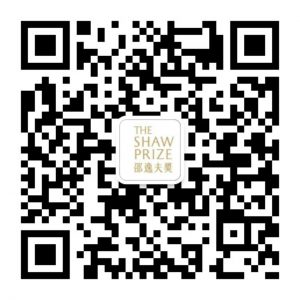The Shaw Prize in Life Science and Medicine 2025 is awarded to Wolfgang Baumeister, Director Emeritus and Scientific Member of the Max Planck Institute of Biochemistry, Germany for his pioneering development and use of cryogenic-electron tomography (cryo-ET), an imaging technique that enables three-dimensional visualisation of biological samples, including proteins, macromolecular complexes, and cellular compartments as they exist in their natural cellular settings.
Human cells possess billions of proteins and other biocomponents that do the work to keep cells, and thus organisms, alive. Sometimes proteins work alone, sometimes they work together with a few other protein partners, sometimes proteins work in large multi-protein complexes, and frequently, these complexes act with other types of biomolecules including DNA, RNA, and lipid membranes. Scientists have long lists of the individual components in our cells. Often structures of these biological entities exist with every atom and its placement in the protein or multi-protein complex precisely known. However, for the vast majority of these fascinating and important biological entities, our knowledge stems exclusively from studies of the isolated protein or isolated multi-protein complex that has been purified away from all other cellular components. But, in cells, these components cannot and do not function alone. For life to happen, proper interactions between and collective activity among biocomponents are required. Moreover, these interactions must take place in the context of cells that are crowded with billions of other biocomponents.
Baumeister’s breakthrough is cryo-ET, a technology that enables the study of proteins and molecular machines in their native contexts, that is, in the intact cell. In cryo-ET, biological samples are rapidly frozen at an extremely low temperature ensuring that the cell or tissue organisation is preserved. Next, sequential pictures of the sample are captured as it is slowly rotated (tilted) to acquire the multiple perspectives required to compile its 3-dimensional structure. This revolutionary advance in imaging is important because knowing both the structure and location of macromolecular complexes within cells is crucial for understanding their functions in health and disease. Through dogged persistence and vision, Baumeister overcame major hurdles. For example, cryo-ET required that the most probable identity and orientation of a macromolecule be identified in the large amount of data acquired. Doing so was time-consuming and necessitated informed guess work. To surmount this roadblock, Baumeister developed template matching, a computational method that enables researchers to locate and identify the positions and orientations of macromolecular complexes within crowded cellular environments. Template matching works by comparing known structural templates to the data coming from the cryo-ET analyses. The template matching advance improved the accuracy and the automation of cryo-ET. Another major limitation was that cryo-ET could only be applied to very small, very thin specimens, such as viruses, bacteria, and yeast. This constraint meant that all the important and fascinating questions regarding the native biology occurring in cells and tissues of higher organisms were precluded from cryo-ET interrogation. In a Herculean feat, Baumeister and his team perfected the use of focused ion beam milling (FIB milling), a term used in manufacturing processes. Factories use rotating cutting tools called milling cutters to shape items from various materials, including metal, plastic, wood, and composites. FIB milling, when applied to cryo-ET, slices away biological material from the outsides of thick samples, thus making the remaining sections thin enough for cryo-ET analysis. Development of FIB milling transformed the field, making previously inaccessible biology amenable to study.
Cryo-ET has now achieved a level of resolution that brings scientists closer to visualising macromolecules at near-atomic resolution in their natural habitat within cells. Baumeister’s advance has launched a new field referred to as “structural biology in situ”.
Beyond his tour de force efforts in method development, Baumeister and his colleagues have demonstrated the power of cryo-ET through their analyses of the 26S proteosome complex, a molecular machine that is required for removal of damaged or unnecessary proteins in cells. Baumeister’s in situ structural studies of the proteasome have provided new insights into the regulation, location, and dynamics of protein turnover within cells. His structural studies have also elucidated how disruption of proteosome function contributes to human disease. Cryo-ET has also had a major impact in virology, where work by Baumeister and others have provided new understanding of how viruses interact with host cell membranes to drive the required rearrangements of viral coat proteins to permit cell surface attachment and promote entry of viral genomes into infected cells. These studies have provided vital information to guide the development of neutralizing antibodies and vaccines.
In summary, Baumeister has developed and applied methods to reveal the inner workings of cells at an unprecedented, near-atomic level. The power of this technology is transforming our understanding of normal life processes and how they go awry in disease.
Life Science and Medicine Selection Committee
The Shaw Prize
27 May 2025, Hong Kong
